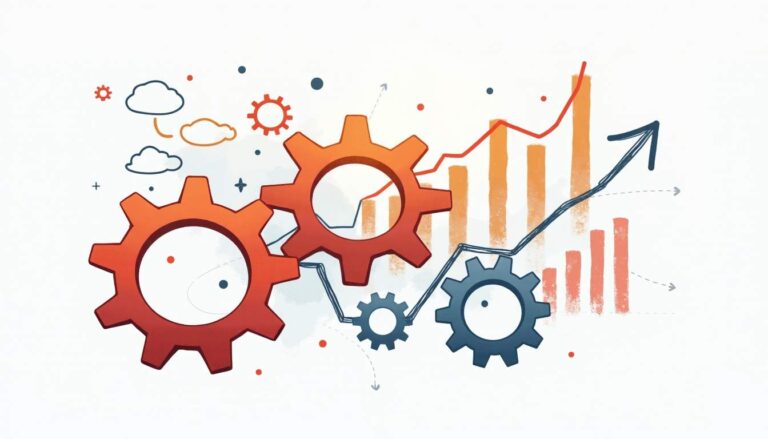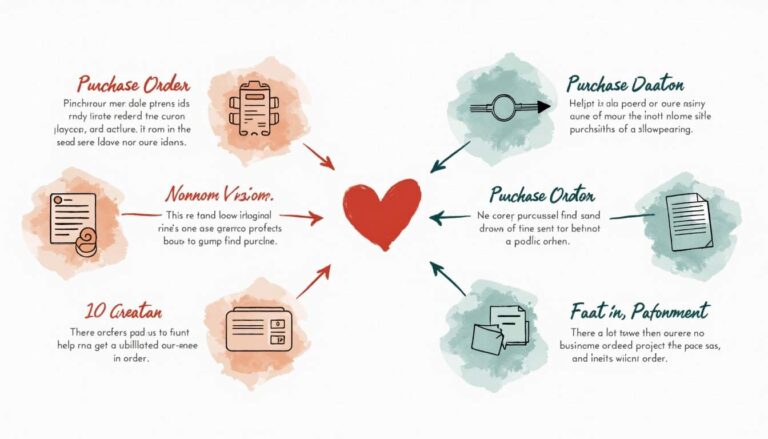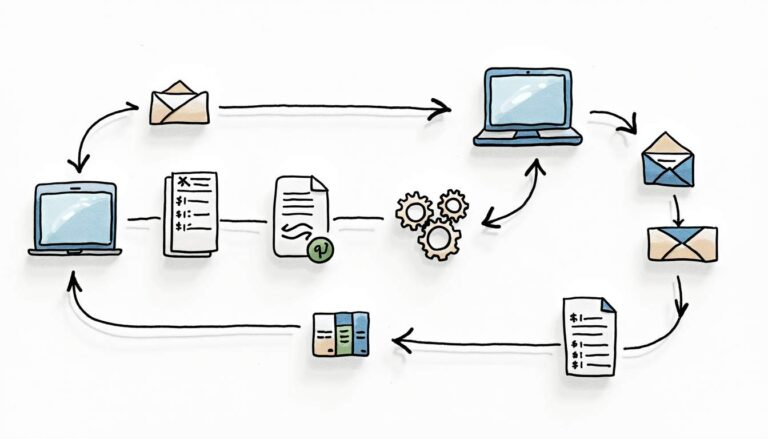Understanding Public Procurement Software
Public procurement software plays a crucial role in managing the purchasing processes of government agencies. It streamlines operations, enhances transparency, and ensures compliance with regulations. As agencies face increasing pressure to optimize their procurement processes, selecting the right software becomes essential.
In 2025, the landscape of public procurement software is expected to evolve significantly, influenced by advancements in technology and changing regulatory requirements. Understanding these shifts can help agencies make informed decisions when choosing a software solution that fits their unique needs.
The Importance of Public Procurement
Public procurement is not merely about purchasing goods and services; it is a vital function that impacts the efficiency of government operations and the delivery of services to citizens. Effective procurement can lead to cost savings, improved service delivery, and enhanced public trust.
Moreover, the procurement process must adhere to strict regulations to ensure fairness and transparency. This is where public procurement software becomes indispensable, facilitating compliance while optimizing workflows. By automating repetitive tasks, such software allows procurement professionals to focus on strategic activities, such as supplier relationship management and performance evaluation, ultimately leading to better outcomes for the public sector.
Key Features to Look For
When evaluating public procurement software, certain features stand out as essential for effective operation. These include user-friendly interfaces, robust reporting capabilities, and integration with existing systems.
Additionally, features such as vendor management, contract lifecycle management, and e-procurement functionalities are critical. Agencies should prioritize solutions that offer customizable dashboards and analytics to track performance metrics and streamline decision-making. Furthermore, the ability to incorporate artificial intelligence and machine learning can provide predictive insights into spending patterns and supplier performance, enabling agencies to make proactive decisions that align with their strategic goals.
Another important aspect to consider is the software’s scalability. As government needs evolve, the procurement software must be capable of adapting to increasing demands and complexity. This includes accommodating a growing number of users, expanding functionalities, and integrating with new technologies that may emerge in the future. Agencies should also look for solutions that provide ongoing support and updates to ensure they remain compliant with changing regulations and best practices in procurement.
Assessing Your Agency’s Needs
Before selecting a procurement software solution, it’s vital for agencies to conduct a thorough assessment of their specific needs. This involves understanding current challenges, future goals, and the unique context in which the agency operates. Each agency has its own set of circumstances that can affect procurement processes, such as budget constraints, regulatory requirements, and the scale of operations. Therefore, a comprehensive needs assessment is not just beneficial; it’s essential for ensuring that the software solution will be effective and sustainable in the long run.
Engaging stakeholders across different departments can provide valuable insights into the functionalities that will be most beneficial. This collaborative approach ensures that the chosen software aligns with the agency’s objectives and enhances overall efficiency. Involving diverse perspectives can also foster a sense of ownership among team members, making them more likely to embrace the new system once it is implemented. Furthermore, this engagement can help identify any potential resistance to change, allowing agencies to address concerns proactively and create a smoother transition.
Identifying Pain Points
Every agency faces unique challenges in its procurement process. Common pain points may include lengthy approval processes, lack of visibility into spending, or difficulties in vendor management. Identifying these issues is the first step toward finding a software solution that addresses them effectively. For instance, if an agency struggles with slow approval times, it may benefit from software that includes automated workflows to streamline the process. Understanding these specific pain points allows agencies to tailor their software requirements to meet their operational needs more accurately.
Conducting surveys or interviews with procurement staff and other stakeholders can reveal areas where the current system falls short. This information is crucial for making informed decisions about software features and capabilities. Additionally, analyzing historical procurement data can provide insights into spending patterns and vendor performance, further illuminating the areas that require improvement. By taking a data-driven approach to identifying pain points, agencies can ensure that their procurement software selection is grounded in real-world challenges and opportunities.
Setting Clear Objectives
Once pain points are identified, agencies should establish clear objectives for what they hope to achieve with new procurement software. Whether it’s reducing processing time, increasing transparency, or enhancing supplier relationships, having defined goals will guide the selection process. Setting objectives not only helps in evaluating potential software solutions but also serves as a benchmark for measuring success after implementation. For example, if an agency aims to reduce processing time by 30% within six months, this target can directly influence the features they prioritize in their software selection.
These objectives should be measurable and time-bound, allowing agencies to evaluate the software’s effectiveness post-implementation. This strategic approach ensures that the chosen solution aligns with the agency’s mission and enhances its procurement capabilities. Furthermore, involving key stakeholders in the objective-setting process can help ensure that everyone is on the same page and committed to achieving these goals. Regularly revisiting these objectives can also facilitate continuous improvement, enabling agencies to adapt their procurement strategies as their needs evolve over time.
Evaluating Software Options
With a clear understanding of needs and objectives, agencies can begin evaluating different software options. This stage involves researching available solutions, comparing features, and considering the overall value offered by each option.
It’s essential to look beyond the surface-level features and assess how well each software aligns with the agency’s specific requirements. This may involve requesting demos, reading user reviews, and consulting with industry experts.
Comparing Features and Functionality
As agencies explore various software options, comparing features and functionality becomes paramount. Key aspects to consider include ease of use, customization options, and the ability to integrate with existing systems.
Additionally, agencies should evaluate the scalability of the software. As procurement needs evolve, the software should be able to grow and adapt accordingly. This flexibility ensures that agencies can continue to meet their procurement goals without having to switch systems frequently.
Considering Vendor Reputation and Support
The reputation of the software vendor is another critical factor in the evaluation process. Agencies should look for vendors with a proven track record in public procurement and positive customer feedback.
Furthermore, assessing the level of customer support offered by the vendor is essential. Reliable support can make a significant difference in the successful implementation and ongoing use of the software. Agencies should inquire about training resources, user manuals, and the availability of dedicated support teams.
Implementation Strategies
Once an agency has selected a procurement software solution, the next step is implementation. A well-planned implementation strategy is crucial for ensuring a smooth transition and maximizing the software’s benefits.

Agencies should develop a comprehensive implementation plan that includes timelines, resource allocation, and training schedules. Engaging stakeholders throughout the process can facilitate buy-in and ensure that the software meets the needs of all users.
Training and Onboarding
Effective training is essential for ensuring that staff can use the new software efficiently. Agencies should invest in comprehensive training programs that cover all aspects of the software, from basic functionalities to advanced features.
Onboarding should also involve ongoing support and resources to help users adapt to the new system. This could include creating user guides, hosting Q&A sessions, and establishing a feedback loop for continuous improvement.
Monitoring and Evaluation
Post-implementation, agencies should establish a framework for monitoring and evaluating the software’s performance. This involves tracking key performance indicators (KPIs) that align with the objectives set during the needs assessment phase.
Regular evaluations can help identify areas for improvement and ensure that the software continues to meet the agency’s evolving needs. Gathering feedback from users is vital for making necessary adjustments and optimizing the procurement process.
Future Trends in Public Procurement Software
As technology continues to advance, several trends are shaping the future of public procurement software. Agencies should stay informed about these developments to ensure their procurement processes remain efficient and effective.

In 2025, trends such as artificial intelligence (AI), machine learning, and blockchain technology are expected to play a significant role in procurement. These innovations can enhance decision-making, improve data security, and streamline processes.
Artificial Intelligence and Automation
AI and automation are revolutionizing procurement by enabling agencies to analyze vast amounts of data quickly and accurately. These technologies can assist in identifying cost-saving opportunities, optimizing supplier selection, and predicting future procurement needs.
By automating repetitive tasks, agencies can free up staff to focus on more strategic activities, ultimately leading to improved efficiency and effectiveness in procurement operations.
Blockchain for Transparency and Security
Blockchain technology offers a promising solution for enhancing transparency and security in public procurement. By creating tamper-proof records of transactions, blockchain can help ensure accountability and reduce the risk of fraud.
Agencies that adopt blockchain technology can benefit from increased trust among stakeholders, as well as improved compliance with regulatory requirements. This technology is likely to become a standard feature in public procurement software in the coming years.
Conclusion
Choosing the right public procurement software in 2025 requires careful consideration of various factors, from understanding agency needs to evaluating software options and implementation strategies. By taking a strategic approach, agencies can select a solution that not only meets their current requirements but also adapts to future challenges.
As the landscape of public procurement continues to evolve, staying informed about emerging trends and technologies will be essential for agencies aiming to enhance their procurement processes. Investing in the right software can lead to significant improvements in efficiency, transparency, and overall service delivery to the public.
Discover the Bellwether Difference
Ready to elevate your agency’s procurement process with a solution tailored to the challenges of 2025 and beyond? At Bellwether, we understand the importance of staying ahead in the evolving landscape of public procurement. Our comprehensive purchasing and inventory management platform is designed to meet the needs of small and mid-size businesses seeking to optimize their procurement strategies. Experience the benefits of automated purchase orders, requisition automation, and insightful spend analytics firsthand. Book a demo today and see how Bellwether can transform your procurement operations into a model of efficiency and transparency.







